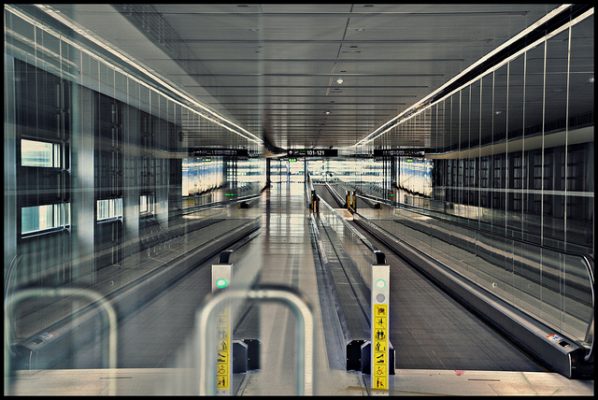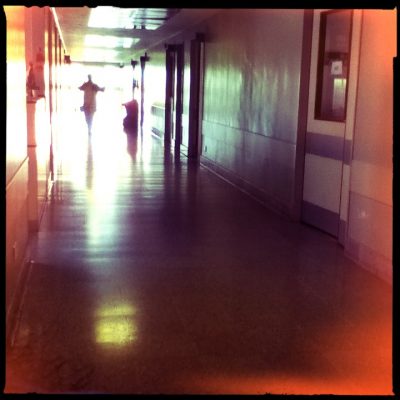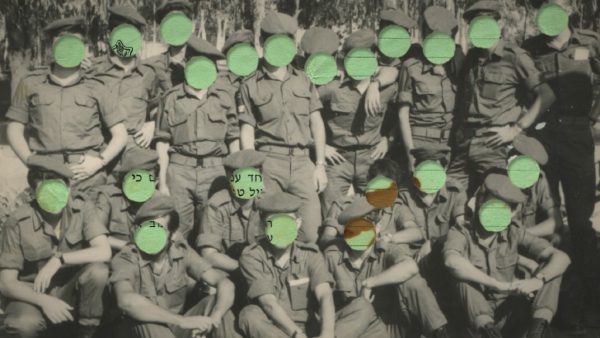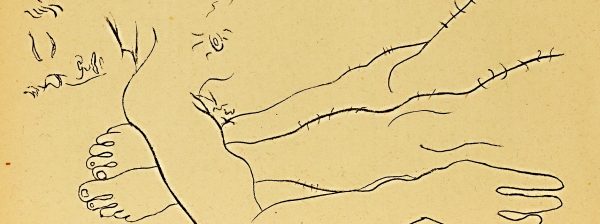‘The instability of an accent, its borrowed and hybridised phonetic form, is testimony not to someone’s origins but only to an unstable and migratory lifestyle, which is of course common in those fleeing from conflict and seeking asylum. Is it not more likely then, than a genuine asylum seeker’s accent would be an irregular and itinerant concoction of voices, a sort biography of a journey, rather than an immediately distinguishable voice, that owes its unshakable roots to a single place?’ –Lawrence Abu-Hamdan ‘The Freedom of Speech Itself’ (2012)
Some artworks reveal something you didn’t know before. They cast light on hitherto unknown facts that move you profoundly upon learning. This is a particularly successful art experience, one you part with an anxious, perhaps even nervous, sense of awareness. And what I learned, on a very cold London morning last January at The Showroom, after listening to Lawrence Abu Hamdan’s ‘The Freedom of Speech Itself’ is that for the past two decades a methodology called forensic speech analysis has been used by several border agencies throughout the West as a means to determine the national identities and geopolitical origins of suspicious prospective immigrants or political refugees. On a practical level that means that asylum seekers might be denied access to safer ground on the basis of their accents or pronunciation of certain vowels, according to the field’s expert phonetic atlas.
The piece, considered by its author to be a documentary, offers abundant facts. A North-American sociolinguist for example, clearly worried about the extent to which this method has been adopted, tells us how forensic speech analysis was developed in the early and mid 1990’s in the Scandinavian countries, particularly Sweden, by linguistic experts working within their asylum and immigration bureaus. A few years later, he continues, these experts span off and created independent companies, selling their expertise back to their governments and eventually to other countries. These days the border agencies of UK or Australia, for example, might record a ten to fifteen minute interview with their suspicious asylum seekers and send the tape to the companies they work with, meaning that a verdict on a person is passed upon a recorded voice, without the candidate having ever been seen by the expert. Thus, decisions are made peripherally by people with no access whatsoever to visual cues or body language, which one would believe essential to the task.
The crux of ‘The Freedom of Speech Itself’, the immateriality and political ramifications of a voiceprint, is sensuously evocative and conceptually suggestive. One tends to think of identifying devices as material stuff: a fingerprint, a teeth print, a photograph… Something we can touch or something that we can see. Learning that the human voice and its ghostly, disembodied recorded version carry such legal consequences is puzzling and uncanny. The opening quote of this text nails the very essence of the forensic speech analysis paradox: our borders are relentlessly dissolving due to technological and economical reasons. Ours is a world where half of its population enjoys a globe trotting existence and the other half is subjected to wars, geopolitical conflicts and the nomadic implications of flight. In an increasingly deterritorialised geographical context where hybrid identities are rife and the formerly pure categories are in the throes of extinction, how can a legal verdict be based on an accent, quite possibly the most porous and unstable human trait? What this artwork exposes is decision making at its most impersonal, cunningly revealing the absurd nature of bureaucracy and how technology might sometimes simplify matters technically while complicating them morally. Could this work be suggesting that perhaps it is time we examine the moral debris expelled by those machines more closely?
While the currency of the subject makes the piece, the strength of ‘The Freedom of Speech Itself’ lies undoubtedly in its medium. It is its formal quality that activates so powerfully the message: a bare sound piece, presented as four speakers on a simple table, surrounded by plastic chairs. For over thirty minutes the listener (as one can’t be called a ‘viewer’ here) just sits and listens, like in the old radio days. Myriad voices succeed one another, from forensic speech experts to a rejected Palestinian refugee. The careful editing threads a fragmented narrative in which the characters disappear and recur, becoming oddly familiar. Despite its length, the piece doesn’t feel monotonous. Minutes pass by as one attentively listens to these voices talking about voices. People imitate accents, repeat syllables, and for a moment I am reminded of French lessons in school, how the teacher would try to teach us a phoneme, emitting a sound and pulling a funny face.
In the March 2011 issue of frieze magazine, the senior editor of Bidoun, Negar Azimi, published an article titled ‘Good Intentions’ where she astutely problematised the question of contemporary political art. She argued that despite its currency and availability, it was “difficult not to recognise in this sea of political shows the art of the token gesture”. A mention of the novel Radical Chic by Tom Wolfe gave further idea of what she was aiming at: ‘[…] Something has changed when it comes to contemporary’s art preoccupation with the political – especially when it is produced in the West. It is more topically driven, more blithely anti-hegemonic and more consensus driven. It is often borne of an idea rather than a lived reality. […] This has managed to create a comfortable distance between politics as manifest in social relations involving authority and power – as a site of real, live action – and politics as a site of performance.’
While I unfortunately have to agree with her statement, I believe there is room for hope. There are ways to surpass the ‘distance’ that Azimi refers to and that I have often experienced –a failure to engage, a easily dismissed sense of déjà vu, an intense but short-lived burst of empathy. If ‘The Freedom of Speech Itself’ manages to get its highly political message across, it is because it is a rather understated sound piece operating in a world plunged into a visual exhaustion, where images, whether real or fictional, have become a cheap currency, devaluated by over exposure and saturation. Sound, on the other hand, remains a rather virgin territory in terms of political art, its agency still to be reclaimed. While it’s been a staple of experimental and cross-disciplinary artistic practices like the ones seen in Fluxus, New Media or Minimalism –which can take the form of durational works, performances or music–bare sound pieces hardly figure in the annals of political art. One can think of Susan Hiller’s beguiling ‘The Last Silent Movie’ (2007), where voices of dead people speak dead languages. But this work is accompanied by a projection with subtitles, to help us understand what these aural ruins are saying, and it seems to probe at more anthropological questions such the metaphysical riddle ‘where do languages go when they die’?
‘The Freedom of Speech Itself’ is about the politics of listening and of speech in their most prescriptive variety. It made me think of Lost in Translation, an exquisite novelisation of exile and of how to tackle a new life in an unknown language, where Eva Hoffman writes at length about speech as class signifier and of accents as stigmas to overcome. But Abu Hamdan’s work shows us what happens when our voices betray us even before we are allowed into that social realm, becoming legal artefacts to be used against our own will and interests. No longer confined to our bodies and beyond our control, our voices can become our downfall in the hands of un-empathic bureaucrats, whose faces we cannot even see. It all may sound like the perfect Philip K. Dick science fiction prophecy, but it is already happening at a border agency near you.




